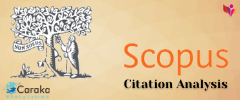PENGARUH PENDEKATAN OPEN-ENDED DAN PENDEKATAN SCIENTIFIC TERHADAP KEMAMPUAN KONEKSI MATEMATIK SISWA SEKOLAH DASAR
Abstract
This study aims to see the influence of open-ended and scientific approach to improving mathematical connection ability of elementary school students. This study is a quasi experimental research, with the design used is "pretest-posttest two treatman design". The population as well as the sample in this research is all the students of grade v of elementary school in SDN 016 Bangkinang Kota. The instrument used in data collection is a mathematical connection test of the description form. The result of the research shows that the learning of mathematics both open-ended and scientific approach have the same effect in improving mathematic connection ability of elementary school students. If reviewed under the category of student ability, high group connection capabilities with a scientific approach are as good as high-group connection capabilities in an open-ended approach. The ability of a moderate group connection with a scientific approach is better than group connection capability is in an open-ended approach. Also in low-group connection capabilities with a scientific approach as well as a low-group connection capability in an open-ended approach. Based on the results of this study, then the learning of mathematics with scientific and open-ended approach can be used as one of the learning that can be applied in an effort to improve the ability of students, especially the ability of mathematical connections of elementary school students.
Keywords: open-ended, scientific, mathematical connection ability, elementary students.
Full Text:
PDFReferences
Ayu, A. R., Maulana, M., & Kurniadi, Y. (2016). PENGARUH PENDEKATAN KONTEKSTUAL TERHADAP KEMAMPUAN KONEKSI DAN PEMECAHAN MASALAH MATEMATIS SISWA SEKOLAH DASAR PADA MATERI KELILING DAN LUAS PERSEGIPANJANG DAN SEGITIGA. Pena Ilmiah, 1(1), 221-230.
Majid, A. (2014). Strategi Pembelajaran. Bandung: PT Remaja Rosdakarya.
Cai, J.L. & Jakabscki, M. (1996). The Role of Open-Ended Task and Holistic Scoring Rubrics : Assesing Student”s Mathematical Reasoning and Communication in Mathematics (Dalam P.C). Reston, VA: The National Council of Teachers of Mathematics.
Cohen, G. A. (2008). Rescuing Justice and Equality. Cambridge, MA: Harvard University Press.
Fraenkel, J. C. & Wallen, N. E. (1993), How to design and evaluate research in education. 2nd edition. New York: McGraw-Hill Inc.
Kurikulum Tingkat Satuan Pendidikan. (2006). Kurikulum Tingkat Satuan Pendidikan. Jakarta: Departemen Pendidikan Nasional.
Lestari, P. (2009). Peningkatan Kemampuan Pemahaman dan Koneksi Matematis Siswa SMK Melalui Pendekatan Pembelajaran Kontekstual. Tesis SPS UPI. Tidak diterbitkan.
Maulana, M. (2015). INTERAKSI PBL-MURDER, MINAT PENJURUSAN, DAN KEMAMPUAN DASAR MATEMATIS TERHADAP PENCAPAIAN KEMAMPUAN BERPIKIR DAN DISPOSISI KRITIS. Mimbar Sekolah Dasar, 2(1), 1-20.
National Council of Teachers of Mathematics. (2000). Principles and Standars for School Mathematics. Reston VA: The National Council of Teachers of Matematics Inc.
Ontario Ministry Education. (2005). Capacity Building Series, Coommunication in the mathematics Classroom Special Edition #13. Ontario: Reach Every Student.
Ruseffendi, E.T. (2006). Pengantar Kepada Membantu Guru Mengembangkan Kompetensinya Dalam Pengajaran Matematika untuk meningkatkan CBSA. Bandung: Tarsito.
Soetjipto, P. (2009). Educational Psychology :Active Learning Edition. Yogyakarta: Pustaka Pelajar.
Tim MKPBM. (2001). Strategi Pembelajaran Matematika Kontemporer. Universitas Pendidikan Indonesia.
Yuniawatika. (2011). Penerapan Pembelajaran Matematika Dengan Strategi REACT Untuk Meningkatkan Kemampuan Koneksi dan Representasi Matematika Siswa Sekolah Dasar. Universitas Pendidikan Indonesia.Tesis tidak dipublikasikan.
DOI: https://doi.org/10.53400/mimbar-sd.v4i2.7385
Refbacks
- There are currently no refbacks.
Copyright (c) 2017 Mimbar Sekolah Dasar

This work is licensed under a Creative Commons Attribution-ShareAlike 4.0 International License.
View Mimbar Sekolah Dasar Stats


.png)

.png)
